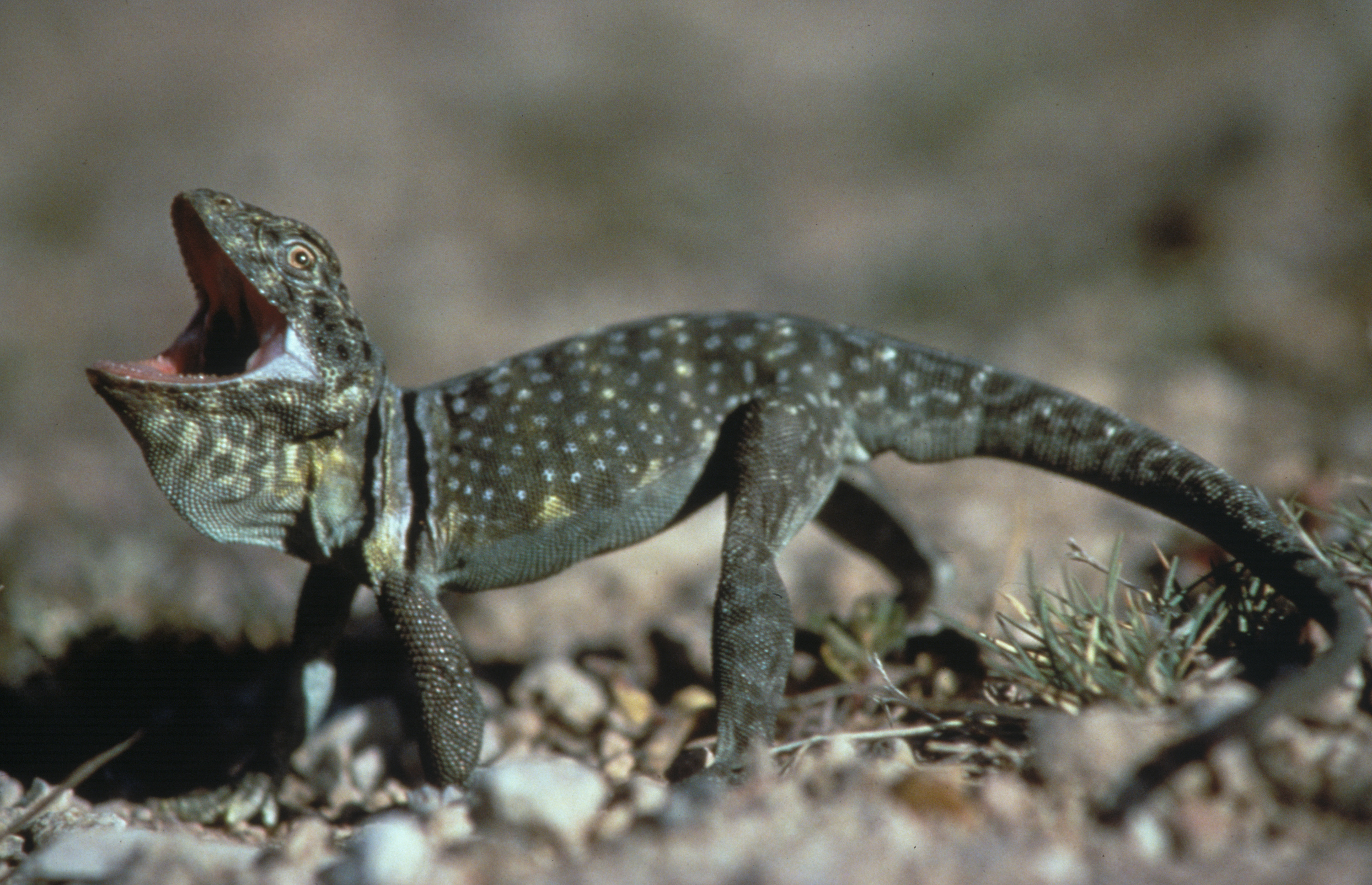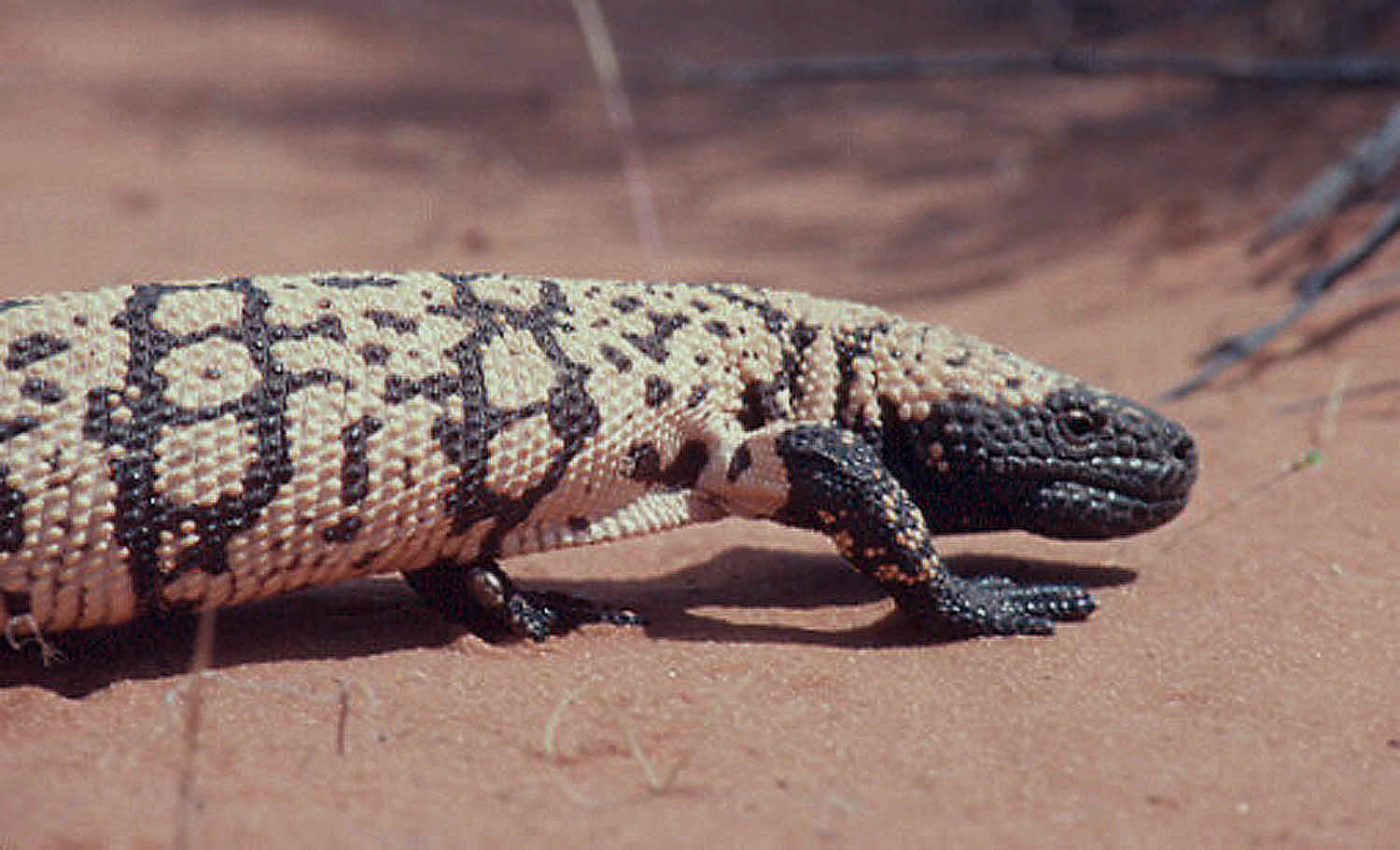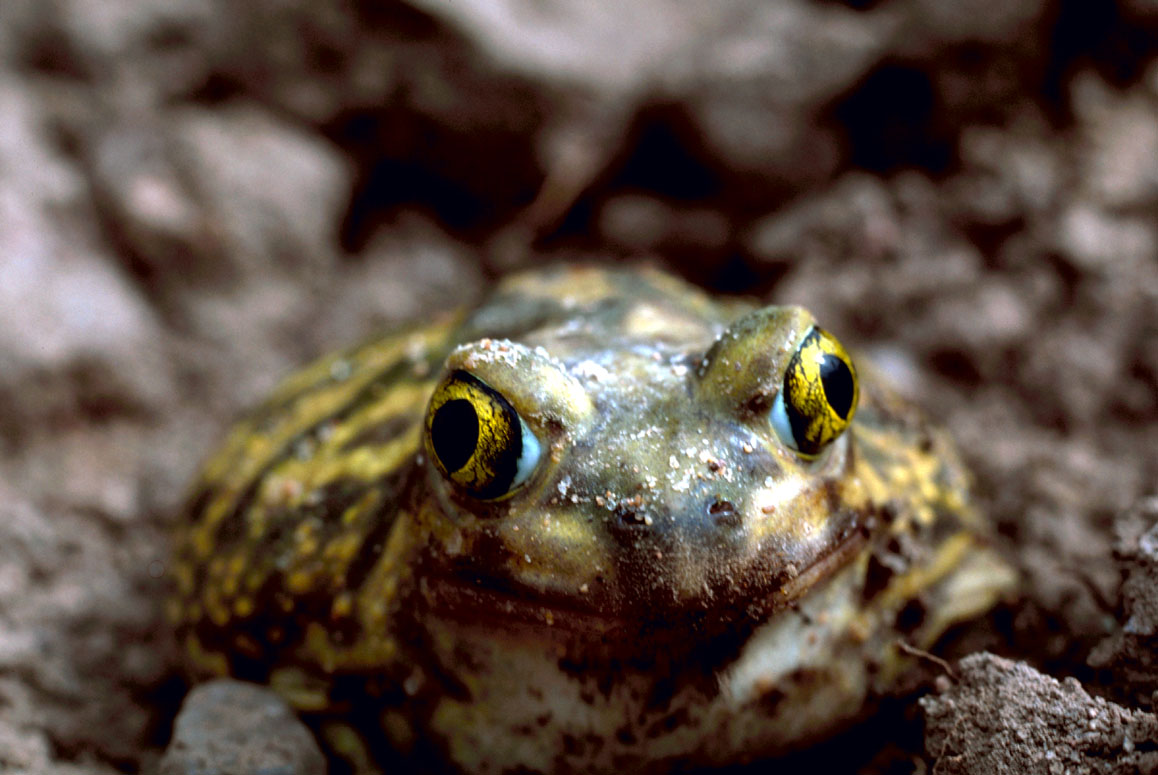
Photo Courtesy US FWS
Lawrence Gamble, Photographer
 Kangaroo Rat
Kangaroo Rat
Photo Courtesy US FWS
George Harrison, Photographer
 Gila Monster
Gila Monster
Photo Courtesy & © Daniel D. Beck
Central Washington University
 Couch’s Spadefoot Toad
Couch’s Spadefoot Toad
Photo Courtesy US FWS
Gary M. Stolz, Photographer
Hi, this is Mark Larese-Casanova from the Utah Master Naturalist Program at Utah State University Extension. Desert Animals-Extreme Survivors
The three main deserts of Utah- the Great Basin to the west, the Colorado Plateau to the east, and the Mojave Desert in the southwest corner of the state- are each inhabited by animals that have unique adaptations for surviving the extreme heat, dryness, and sometimes cold temperatures of the desert.
Many animals survive in Utah’s deserts through behavioral adaptations. During the heat of the day, most animals can be found underground in burrows, or simply sitting in the shade of a shrub or tree. Reptiles, such as the desert tortoise and gila monster, spend almost all of their time in a burrow or under a rock. Many birds and mammals are most active near dawn and dusk when temperatures are coolest, yet there is enough light to see. Many bats, snakes, and rodents are nocturnal, and are only active at night!
Morphological adaptations, related to the shape or color of an animal’s body, are also important for living in the desert. The collared lizard has long legs and toes that keep its body away from the hot ground, reducing heat absorption. White-tailed antelope ground squirrels will use their bushy tails as a shade umbrella, and the long ears of the jackrabbit aid in dispersing body heat.
The kangaroo rat has perhaps the most amazing combination of adaptations for desert survival. Not only does it live in a burrow and is nocturnal, but it recaptures it’s own body moisture by storing food within its burrow. Dry seeds absorb moisture from the kangaroo rat’s breath, which condenses more readily in the cooler underground temperatures.
Physiological adaptations relate to a change in body function to aid survival in the desert. The kangaroo rat has such complex kidneys that it is able to retain as much water as possible. It also has specialized tissues in its nasal passages that help it retain much of the moisture that is normally lost through breathing. If the desert gets too hot, many animals will aestivate, which is similar to hibernating, but is usually in response to a lack of water rather than a lack of food. The spadefoot toad spends 10-11 months out of the year buried in the soil, only to emerge to breed and feed during summer rainstorms.
So, while at first glance, it may look like there isn’t much life in the desert, keep in mind that the vast array of adaptations help ensure the survival of a high diversity of plants and animals in such a harsh ecosystem.
For Wild About Utah, I’m Mark Larese-Casanova.
Credits:
Images: Courtesy US FWS images.fws.gov
Courtesy & Copyright Daniel D. Beck, Central Washington University
Text: Mark Larese-Casanova, Utah Master Naturalist Program at Utah State University Extension.
Additional Reading:
Utah’s Desert Dwellers: Living in a Land of Climate Extremes. Wildlife Review. Utah Division of Wildlife Resources
wildlife.utah.gov/wr/0706desert/0706desert.pdf
Deserts. James MacMahon. The Audubon Society Nature guides. 1985. https://www.amazon.com/Deserts-National-Audubon-Society-Nature/dp/0394731395
Natural History of the Colorado Plateau and Great Basin, Harper, St. Clair, Thorne, and Hess (Eds.), 1994. https://www.amazon.com/Natural-History-Colorado-Plateau-Great/dp/0870815113
The Biology of Deserts, David Ward, Oxford University Press, 2009. https://www.amazon.com/Biology-Deserts-Habitats/dp/0199211477
